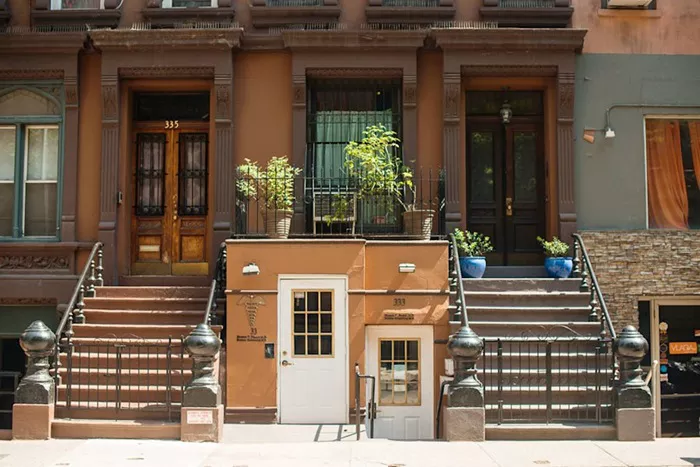The name “Hell’s Kitchen” didn’t come out of nowhere. It dates back to the 19th century, a time when this area on the West Side of Manhattan was a rough and tumble place. Back then, the neighborhood was filled with working – class immigrants, mostly Irish, German, and Italian. They came here looking for work, often in the nearby docks or factories.
The living conditions were harsh. The buildings were crowded tenements, and the streets were narrow and dirty. There was little in the way of proper sanitation, and crime was common. One story goes that a police officer, after dealing with a particularly rowdy and violent situation in the neighborhood, exclaimed that it was “hellish” and as hot as “hell’s kitchen.” This off – the – cuff remark might have been the start of the name.
Another theory links the name to the area’s overcrowded housing. With so many people packed into small spaces, the heat inside the buildings, especially during the summer, must have been unbearable. It was like being in a sweltering kitchen, and the term “Hell’s Kitchen” seemed to fit.
The Gangster Era: A Notorious Reputation
As the 20th century rolled in, Hell’s Kitchen became known for its gang activity. Gangs like the Westies ruled the streets. They were involved in everything from petty theft to violent crimes. The neighborhood was a no – go area for many New Yorkers, unless they were from there or had business with the locals.
I walked through the area and tried to imagine what it was like during this dark period. The stories of shoot – outs in the streets and rival gang battles were chilling. The gangs had a tight grip on the neighborhood, extorting money from local businesses and intimidating residents. Movies and TV shows often depict this era, showing how tough life was in Hell’s Kitchen. For example, the movie “The Irishman” gives a vivid portrayal of the criminal underworld in this part of New York.
The area also had a reputation for its saloons and speakeasies during the Prohibition era. These hidden drinking spots were not only places to get a drink but also centers of illegal activity. They added to the lawless and wild image of Hell’s Kitchen.
Proximity to Industry: Fueling the “Hellish” Image
The neighborhood’s location near the Hudson River also contributed to its rough reputation. The docks were a major source of work, but they were also places of hard labor and danger. Longshoremen worked long hours, loading and unloading ships. Fights would break out over jobs, and the docks were often the scene of violence.
The factories in the area added to the chaos. The noise, the smoke, and the constant activity made it feel like an industrial inferno. The air was filled with the smell of burning coal and machine oil. This industrial environment, combined with the social problems of the neighborhood, made it seem like a place straight out of a nightmare.
Transformation and Revival
In recent decades, Hell’s Kitchen has undergone a remarkable transformation. I was amazed to see how much it has changed. The old tenements have been renovated, and new apartment buildings and luxury condos have sprung up. The streets are cleaner, and the crime rate has dropped significantly.
One of the biggest factors in this transformation is its location. It’s close to Midtown Manhattan, Times Square, and the Theater District. This prime location has attracted developers and businesses. Now, the area is filled with trendy restaurants, cafes, and shops. I spent hours exploring the different eateries, from small Italian trattorias to upscale sushi bars.
The Theater District’s influence has also been huge. Many actors, directors, and crew members live in Hell’s Kitchen because of its proximity to the Broadway theaters. This has led to a vibrant arts and culture scene. There are small theaters and art galleries popping up all over the neighborhood, adding to its new – found charm.
The Name’s Persistence
Even though Hell’s Kitchen is no longer the dangerous and lawless place it once was, the name has stuck. It’s now a part of the neighborhood’s identity. Some locals take pride in the name, seeing it as a reminder of the area’s tough past and how far it has come.
Businesses in the area also use the name to their advantage. There are restaurants named “Hell’s Kitchen,” and tour companies offer guided walks through the neighborhood, telling the story behind the name. It has become a marketing tool, attracting tourists who are curious about the area’s history.
Conclusion
In conclusion, the name “Hell’s Kitchen” has a long and complex history. It originated from the harsh living conditions, crime, and industrial chaos of the 19th and 20th centuries. The area’s reputation as a tough and dangerous neighborhood was well – earned during the gangster era and the days of industrialization. However, through the years, Hell’s Kitchen has transformed into a vibrant and desirable place to live and visit. Despite the changes, the name remains, a symbol of the neighborhood’s past struggles and its remarkable journey of revival. It’s a name that tells a story, and every time I hear it, I’m reminded of the rich history and the ever – evolving character of this unique part of New York City.

